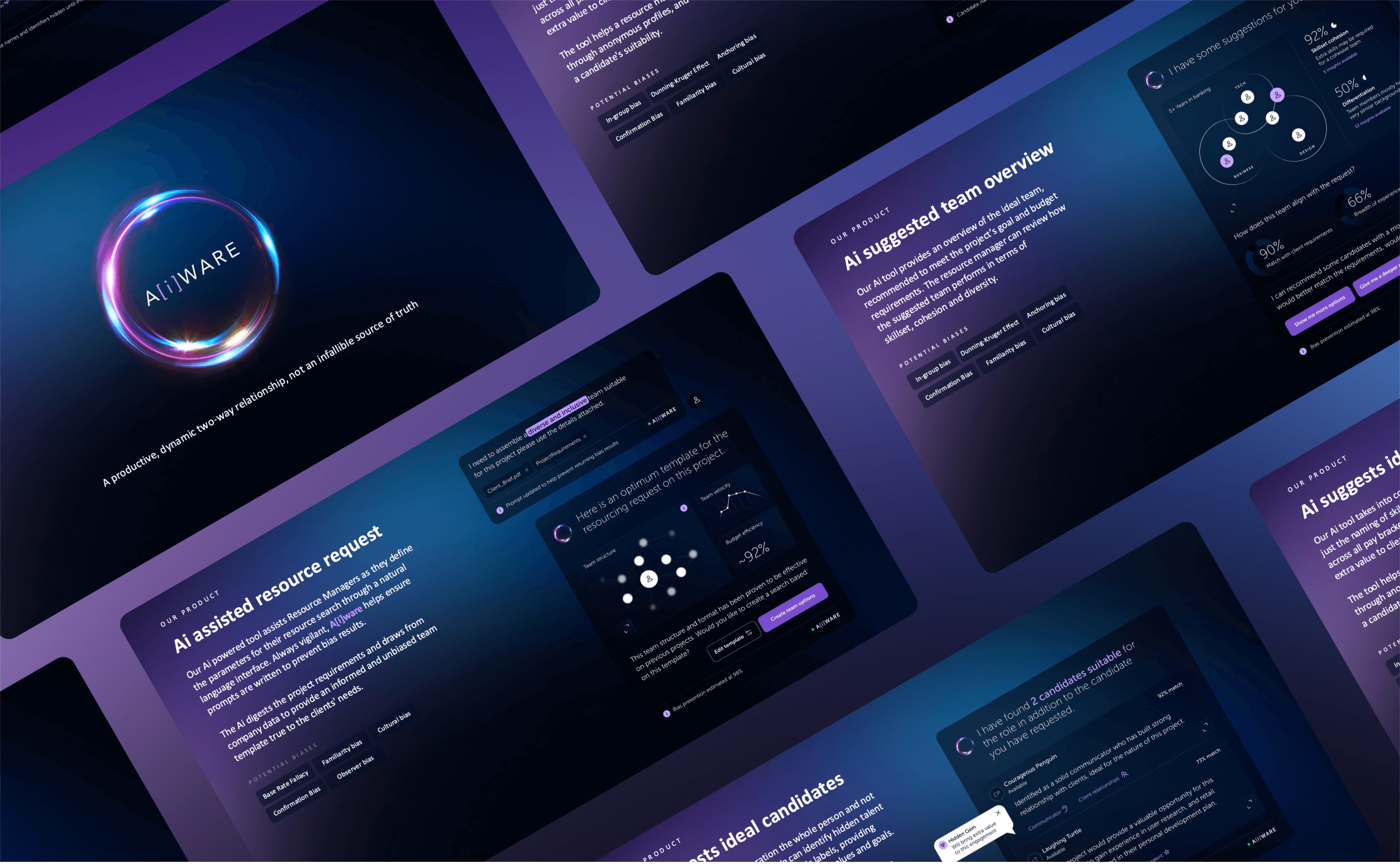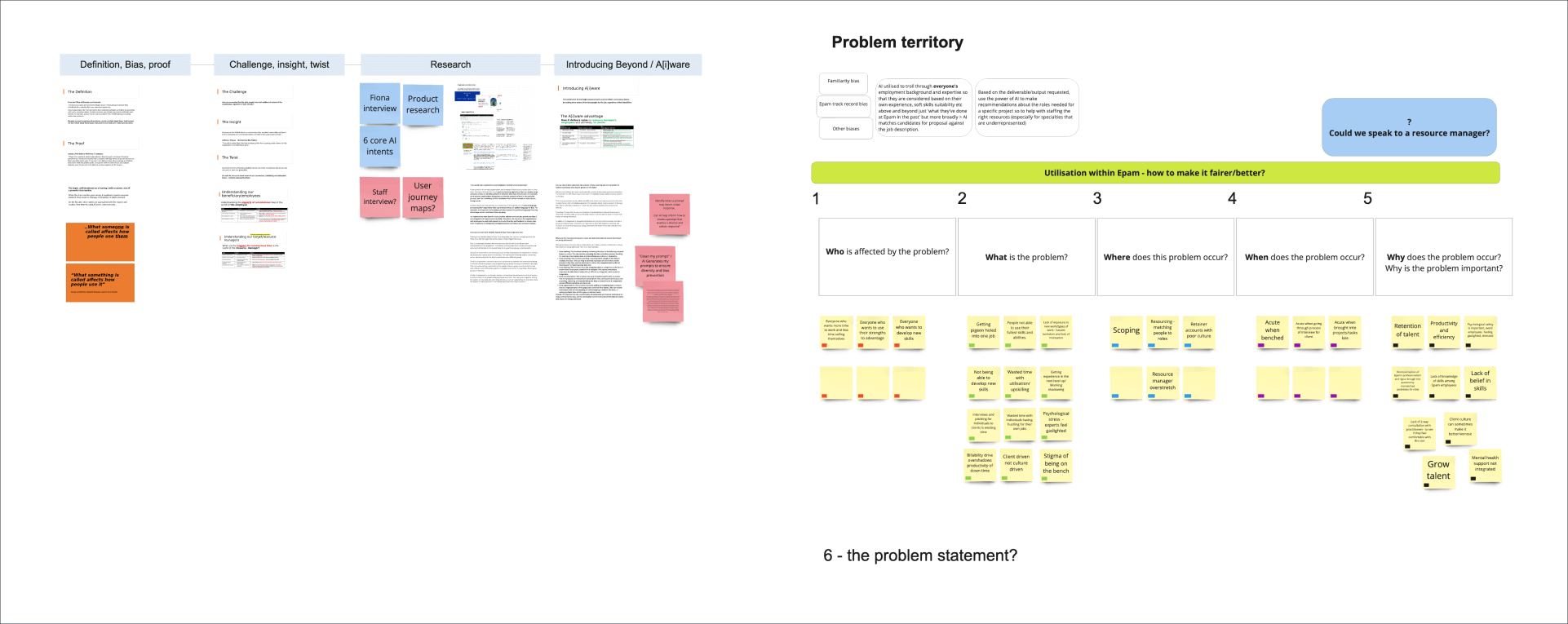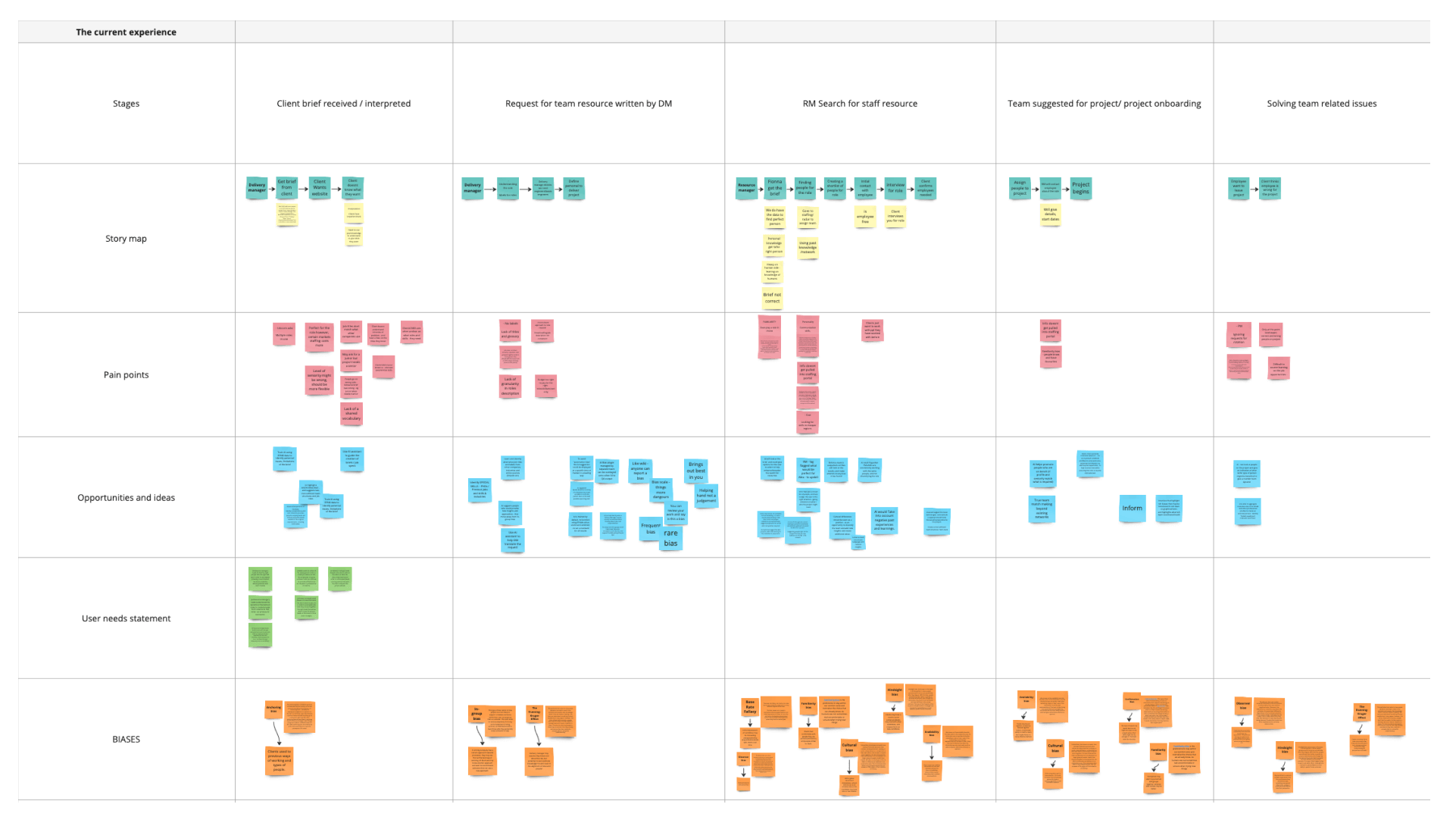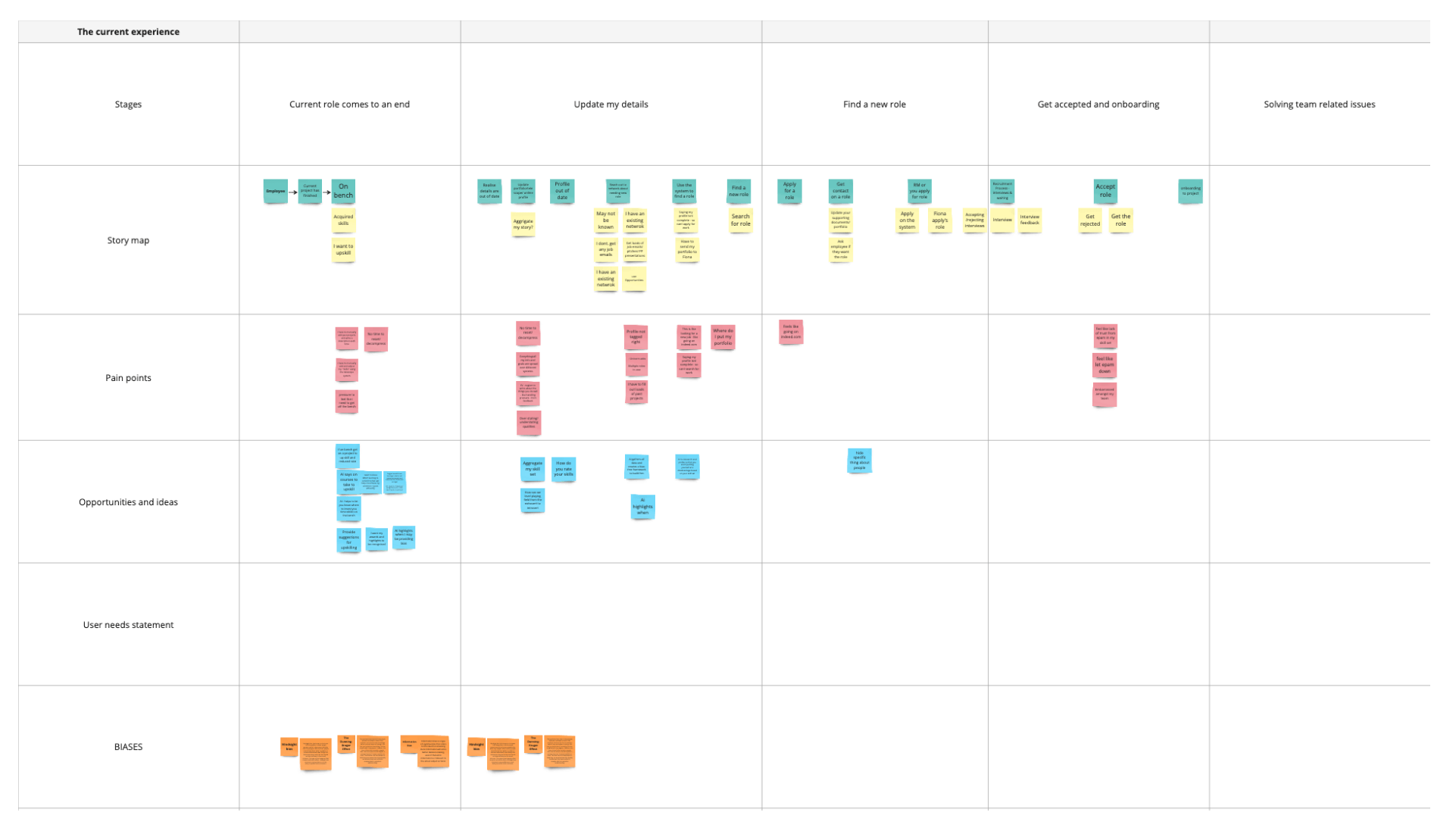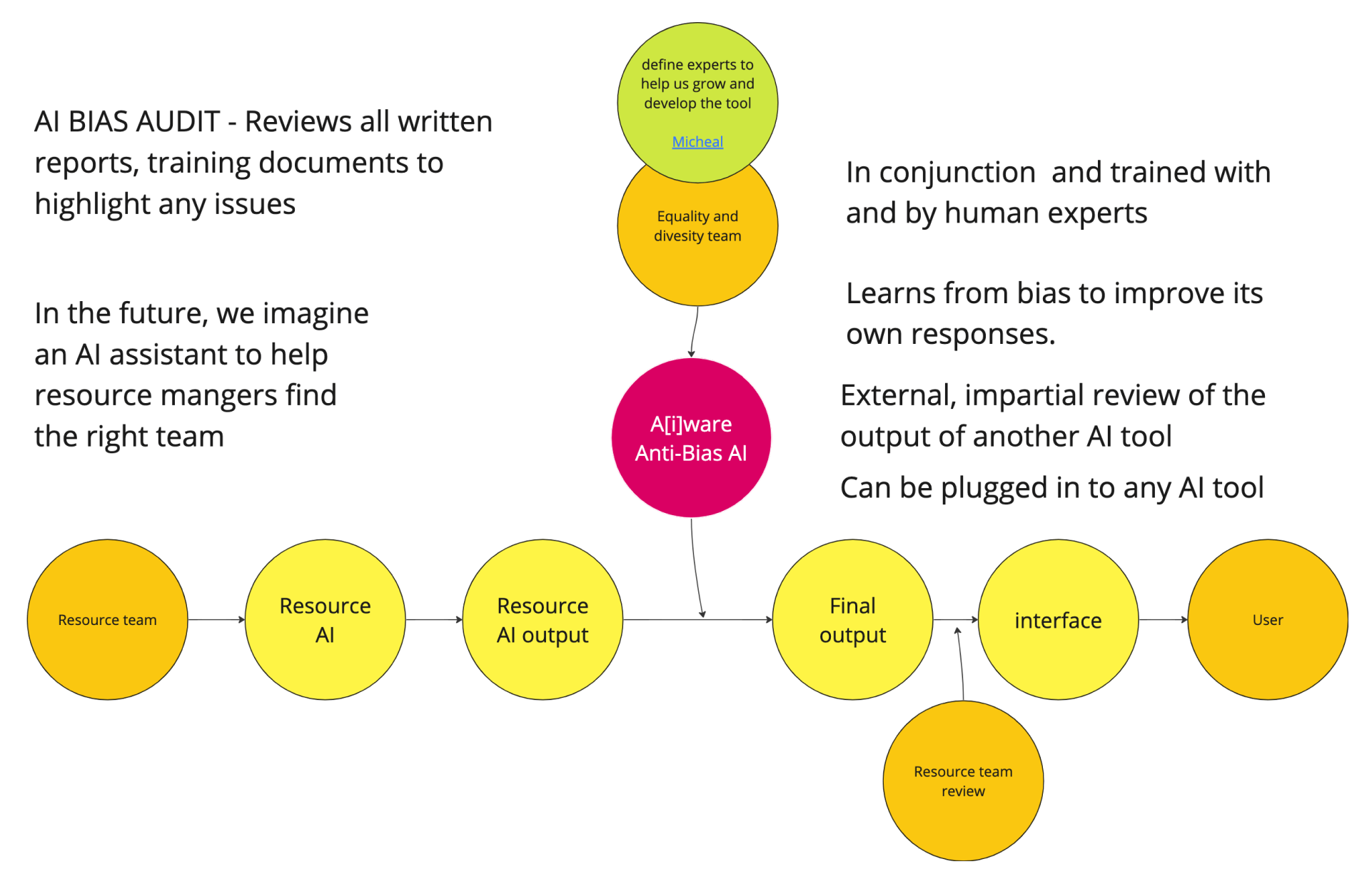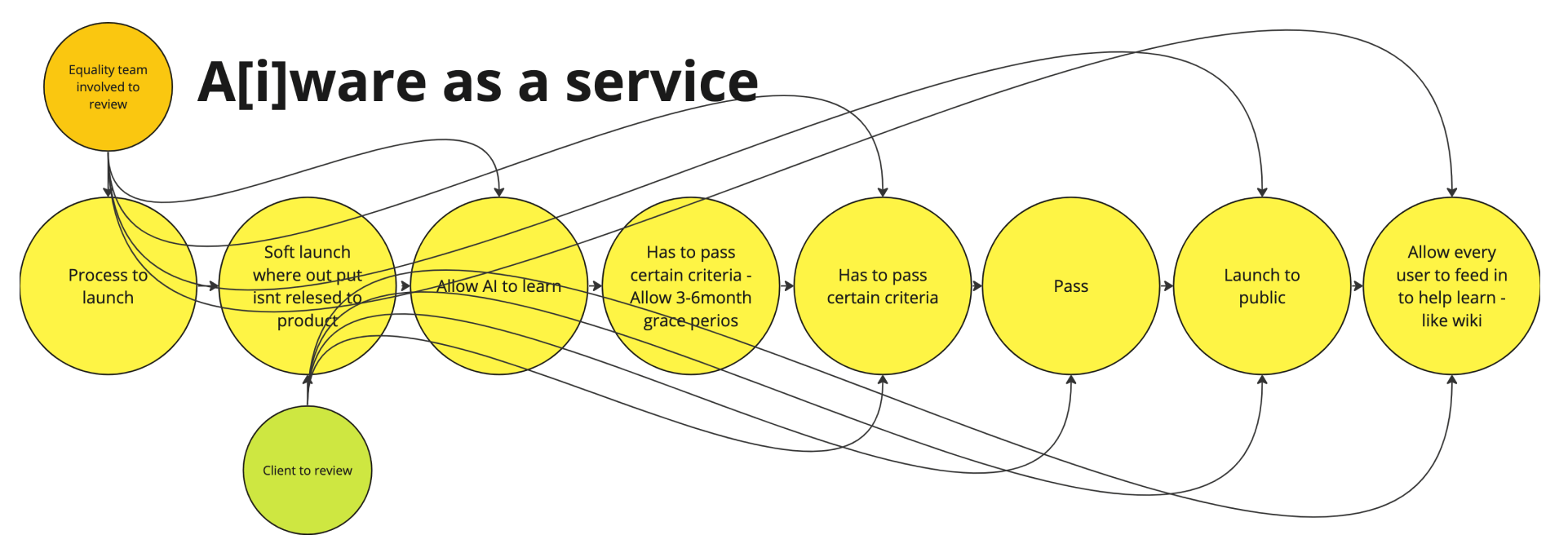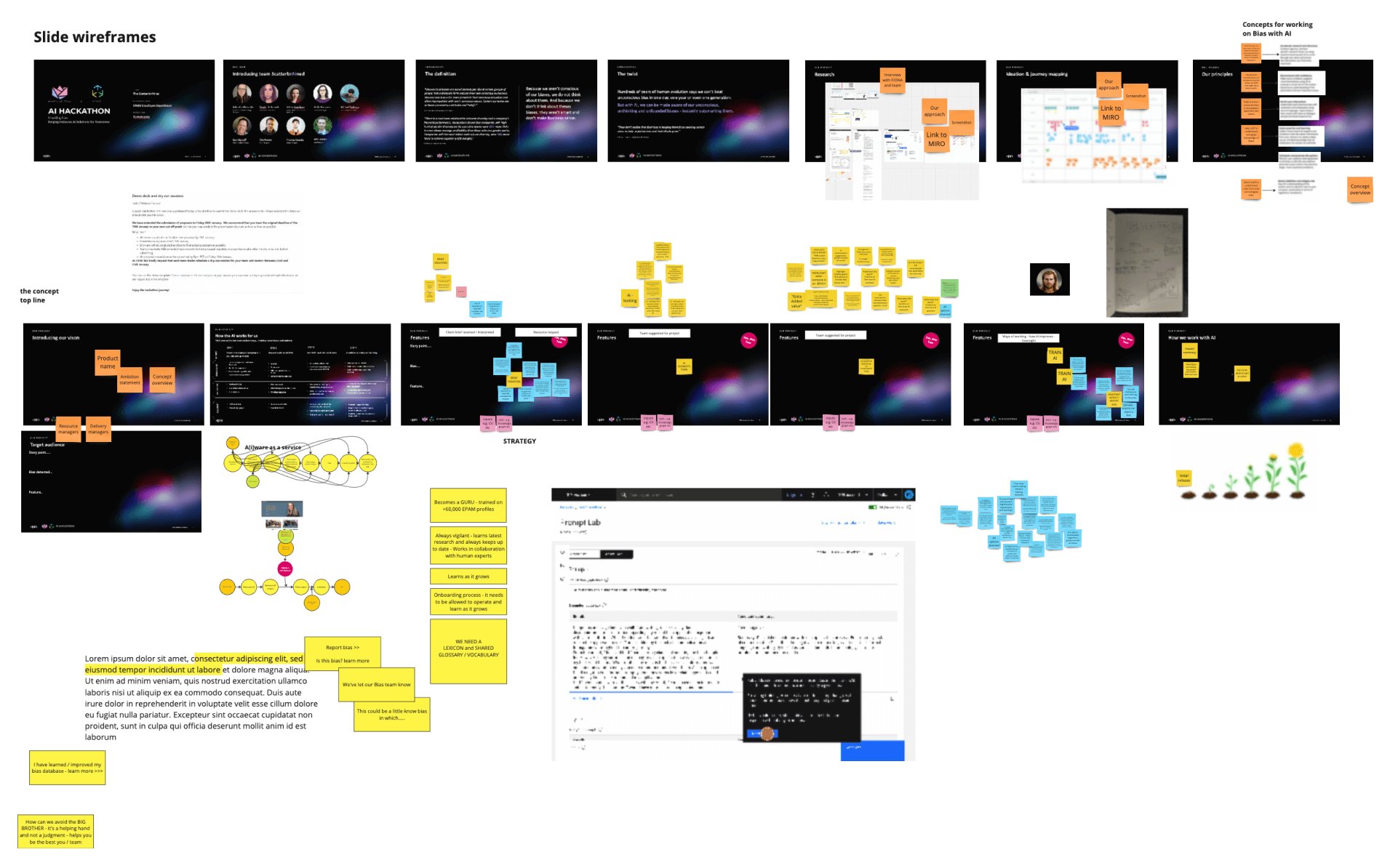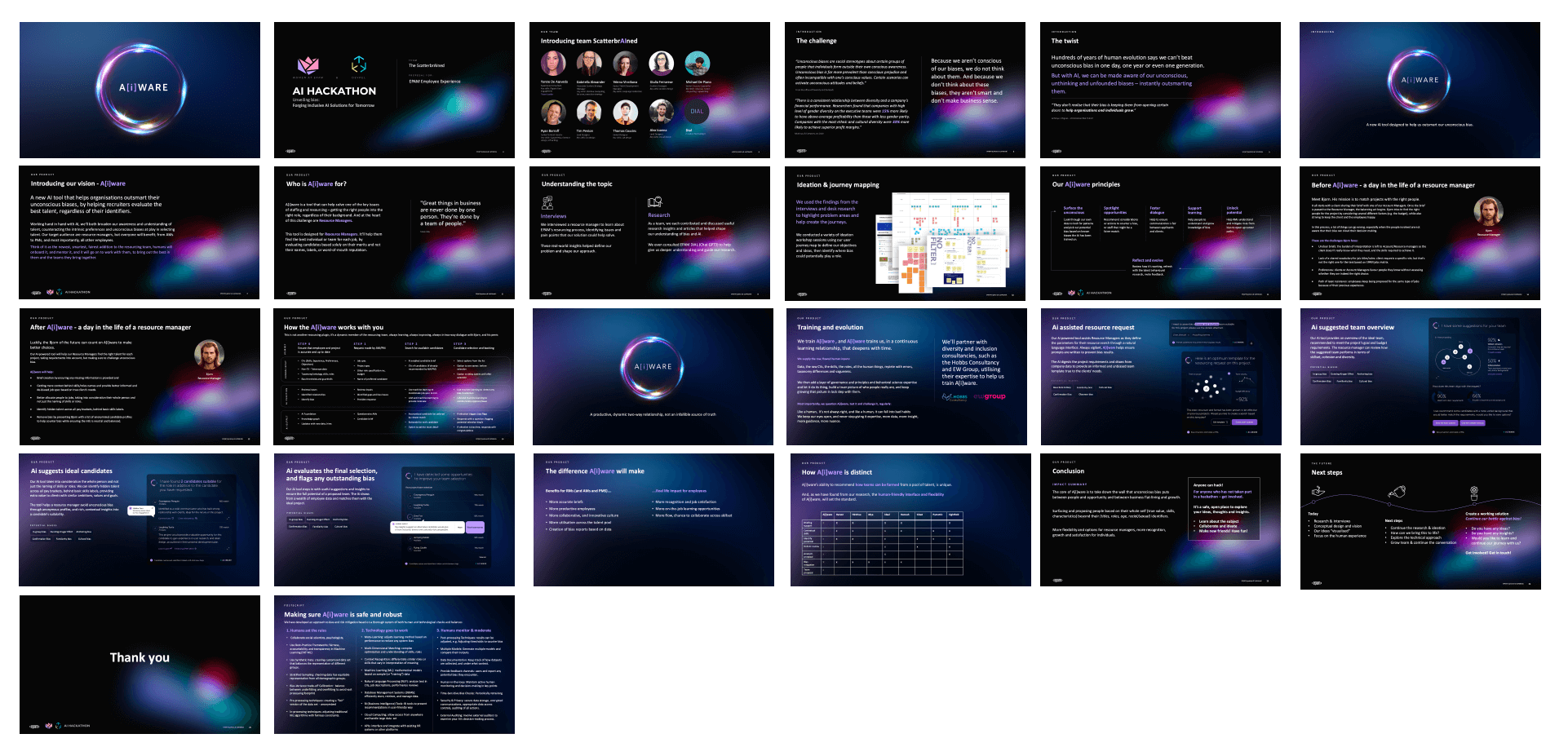AiWare - Reducing bias in resourcing
AI tool to reduce bias, highlighting people for their whole selves, unlocking more opportunity and flexibility.
The problem: At EPAM, Resource Managers often default to people they know — especially those in their own location — when staffing roles. This creates blind spots, with some team members becoming overloaded while equally capable talent in other regions (like Hungary or Poland) remains untapped.
The hackathon challenge asked: How could AI help reduce this bias and create fairer, more inclusive staffing decisions across EPAM’s 50,000-strong workforce?
My Role: As the UX lead in our hackathon team, I facilitated the early ideation workshops to help define the problem space and align the group on a clear direction. Once we chose to focus on resourcing bias, I mapped out the end-to-end journey of a Resource Manager, using insights from interviews and research to highlight key friction points and moments where bias tends to creep in. This journey became the foundation for identifying where AI could offer the most value. I then worked closely with a UI designer and another UXer to define the necessary flows, wireframes, and presentation structure. I also created a straw man deck to shape the narrative — ensuring our final pitch told a clear story, grounded in user needs and design thinking.
Skills used: Leading workshops / Wireframing / Requirement gathering / Stakeholder management / Pitch / Presentation
The Brief
“How can we harness the power of AI to cultivate a workforce experience at EPAM that is both inclusive and diverse?”
We set out to explore how AI could support fairer internal hiring, while also enabling more flexible growth opportunities by intelligently pairing junior and mid-level staff with experienced mentors.
Deciding a direction
We started with a team ideation session, using EPAM’s three core objectives as guideposts. Through dot voting, we landed on a clear area of impact: resourcing.
Rather than build another generic AI matching tool, we asked: What if we could use AI to widen the lens, reduce bias, and reveal hidden potential — not just repeat the same patterns?
Research
We gathered insights through desk research and conversations with EPAM’s internal resourcing team. These revealed key friction points:
Resource Managers defaulting to people they know
Location bias limiting visibility of remote/global talent
Overloading of high-performers
Limited pairing of junior staff with growth opportunities
Mapping the experience
Using the research, I mapped the current resourcing journey to reveal problem areas, emotional touchpoints, and moments of bias. This journey helped us identify opportunities for AI intervention — such as surfacing similar candidates, suggesting pairings, or highlighting when someone is nearing burnout.
From journey to wireframes
Using the journey map as a foundation, I worked with a UI designer to translate our concept into wireframes that showed how Aiware could surface talent at key points in the process. I also created simple service-level flows — using basic boxes and arrows — to show where the AI tool would sit within the existing ecosystem, helping the team understand how it could integrate with current resourcing tools.
Defining the story
To bring it all together, I created a straw man presentation to align our designers and shape the story we wanted to tell. This included a mix of wireframes, flows, and value moments that helped the concept feel tangible and real — even within the constraints of a fast-paced hackathon.
Outcome
Our team placed 3rd out of 20 and was invited to present the project more widely across EPAM. The idea sparked conversations about how AI could be applied within resourcing and how design-led thinking could be embedded into future internal innovation efforts.
